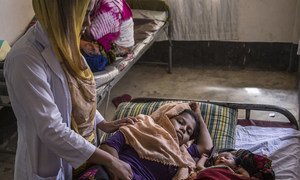International Day Of The Midwife
The medical profession of a midwife is celebrated every year on May 5. The goal of the observance is to draw attention to this field of health care and to attract more registered nurses to become midwives. Midwives are qualified health care providers who receive comprehensive training and must pass an examination to become certified. Certification is offered by the American College of Nurse-Midwives (ACNM) and the North American Registry of Midwives (NARM).
A midwife will:
- Provide family planning and preconception care
- Do prenatal exams and order tests
- Watch physical and psychological health
- Help make your birth plans
- Advice about diet, exercise, meds, and staying healthy
- Educate and counsel your pregnancy, childbirth, and neonatal care
- Give emotional and practical support during labor
- Admit and discharge patients from the hospital
- Deliver babies
- Make referrals to doctors when needed
Some of the first records of the occupation of midwife go back about 2,000 years before Christ. The actual word ‘midwife’ dates back to around 1300 and means together or alongside a woman (mid means ‘together with’, so ‘together with woman’).
WebMD says midwives may deliver babies at birthing centers or home, but most can also deliver babies at a hospital.
The organization Midwives Alliance quotes a report from the Center for Disease Control and Prevention (CDC) that says the number of midwives attending births in the U.S. reached an all-time high in 2009 and continues to climb.
Millennials more than their parents appear to be interested in delivering babies with a midwife. The Bureau of Labor Statistics reports there were 6,250 practicing certified midwives in the United States in 2018. The average earnings for a midwife in the U.S. are about $104,000.
History
The idea of having a day to recognize and honor midwives came out of the 1987 International Confederation of Midwives conference in the Netherlands. International Midwives’ Day was first celebrated on May 5, 1991, and has been observed in more than 50 nations around the world.
Why are midwives important?
1. Midwives save millions of lives each year

The world has seen a steady decline in maternal and newborn deaths since 1990, in large part because more women are receiving skilled midwifery care: from 67 per cent in 2010 to 79 per cent in 2017. According to the World Health Organization (WHO), quality midwifery reduces maternal and newborn mortality and stillbirth rates by over 80 per cent, and reduces pre-term labour and birth by 24 per cent.
Yet hundreds of thousands of women and newborns continue to die each year during pregnancy and childbirth. The UN estimates that 303,000 women and about 2.7 million newborn babies died in 2015 alone. According to the UN Sexual and reproductive health agency, UNFPA, today, the maternal mortality ratio stands at 216 deaths per 100,000 live births. This is more than 800 women dying every day while giving life. Most of these deaths are preventable and the vast majority of these women lost their lives due to complications and illnesses that could have been prevented with proper ante-natal, delivery and post-natal care – services provided by midwives.
2. Beyond survival, midwives offer critical medical care

Even though the maternal and newborn death rate is declining, pregnancy and childbirth remain risky for the health of many women around the world. For every woman who dies in childbirth, an estimated 20 to 30 encounter injuries, infections or disabilities during labour. According to WHO, midwives can deliver 87 per cent of all essential sexual, reproductive, maternal and newborn health services.
Midwives also provide counselling and services, and they can perform breast and cervical cancer screenings. If authorized by their countries, they can perform basic emergency obstetric care.
One of the most serious childbirth injuries is obstetric fistula – a hole in the birth canal that can develop during a prolonged, obstructed labour. UNFPA says its impact on women is “catastrophic,” as fistula survivors often experience incontinence, chronic medical problems and social isolation. It is estimated that over 2 million women in sub-Saharan Africa, Asia, the Arab region, and Latin America and the Caribbean are living with fistula, and some 50,000 to 100,000 new cases develop every year. Yet, this condition is almost entirely preventable when women have access to timely, high-quality care.
Quality midwifery care also improves breastfeeding rates and psycho-social outcomes, reducing the use of interventions, in particular caesarean sections. What’s more, as members of their communities, midwives are also able to provide culturally sensitive care that is more likely to have a lasting impact.
3. Midwives are critical defenders of the rights of women

Midwives also do much to advance women’s and girls’ rights. By providing information and counselling, they can provide help with family planning; they help prevent female genital mutilation (FGM); they can offer support and assistance to survivors of gender-based violence; and they can provide reproductive health services to adolescents, who are often denied access to these services at great cost to their health and rights.
Thanks in large part to the role played by midwives, overall today, women are more likely to become mothers by choice, not chance. In the past 25 years, contraceptive prevalence increased by 25 per cent. In 1994, the birth rate among adolescents – girls aged 15 to 19 – was 65 births per 1,000 women. Today, that number is 44 births per 1,000 women.
Despite these gains, many women and adolescent girls still do not exercise full control over their own bodies and reproduction as more than 200 million women around the world want to avoid pregnancy but are not using safe and effective modern contraception. And although rates of adolescent pregnancy have fallen, they remain high in many parts of the world, particularly areas where access to contraceptives is low and rates of child marriage are high.


